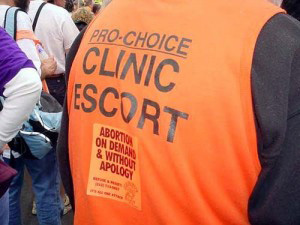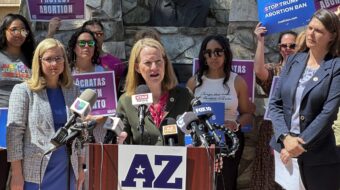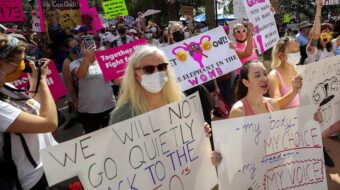
The Supreme Court unanimously nullified Massachusetts’ abortion buffer zone policy last week, ruling in favor of rightwing protesters who claimed having to remain 35 feet from clinic doors is a violation of their first amendment free speech rights.
The Massachusetts policy aimed to protect women as they accessed reproductive health care against a backdrop of harassment and even physical attacks from anti-choice protesters.
The High Court ruled that “by its very terms the Act restricts access to public ways and sidewalks, places that have traditionally been open for speech activities and that the Court has accordingly labeled traditional public forums…The buffer zones burden substantially more speech than necessary to achieve the Commonwealth’s asserted interests.”
Choice advocates have noted angrily that for purposes of their own safety the Supreme Court justices have drawn a substantially larger buffer zone around the High Court building itself – one that includes the entire 252-by-98 foot plaza in front of the building.
Supporters of women’s right to choose note that the buffer zones are needed because the activities outside clinics constitute much more than just free speech.
“The idea that the people standing outside clinics screaming and yelling, chasing people into the streets, surrounding medical transport vehicles and threatening staff are there for First Amendment expressions would be laughable if the potential for violence wasn’t so real,” said Katie Klabusich, a long-time clinic defense escort volunteer in Chicago, on her blog June 26.
There have been more than 300 acts of violence against reproductive healthcare clinics between 2010 and 2012 alone, including eight murders and seventeen attempted murders since 1991.
Klabusich, who has stood as a physical barrier between patients and howling protesters with bullhorns and graphic signs said that there was one part of the Court decision that particularly troubled her:
“Petitioners (the right-wing anti-abortion activists who brought the suit) wish to converse with their fellow citizens about an important subject on the streets and sidewalks – sites that have hosted discussions about the issues throughout history. But here the Commonwealth has pursued those interests by the extreme step of closing a substantial portion of a traditional public forum to all speakers.”
“My doctor’s office is not a public forum,” said Klabusich.
According to the National Abortion Federation (NAF), which closely follows the violence at clinics, buffer zones have had a measurable and positive impact in places where they are in effect. The group reports a 51 percent drop in criminal activity where the zones are maintained.
With the buffer zone policy struck down, women accessing care at the clinics will have to be face to face, with, rather than 35 feet from shouting abortion opponents .
Volunteers with groups like the Eastern Massachusetts Abortion Fund point out that there are many hurdles women who need an abortion must face long before they even get to a clinic. They note, for example, that without money abortion could just as well be illegal. The EMA Fund, among many other services, helps raise money for women who need it.
“We say abortion access shouldn’t depend on your income, on whether you have a car, or whether you have the right kind of health insurance,” Alicia Johnson, a Boston resident who volunteers with he EMA Fund said. “Once you finally line up all of these things you shouldn’t have to face protesters who are trying to scare you away from the healthcare center.”
Photo: Trustwomen.org.












Comments